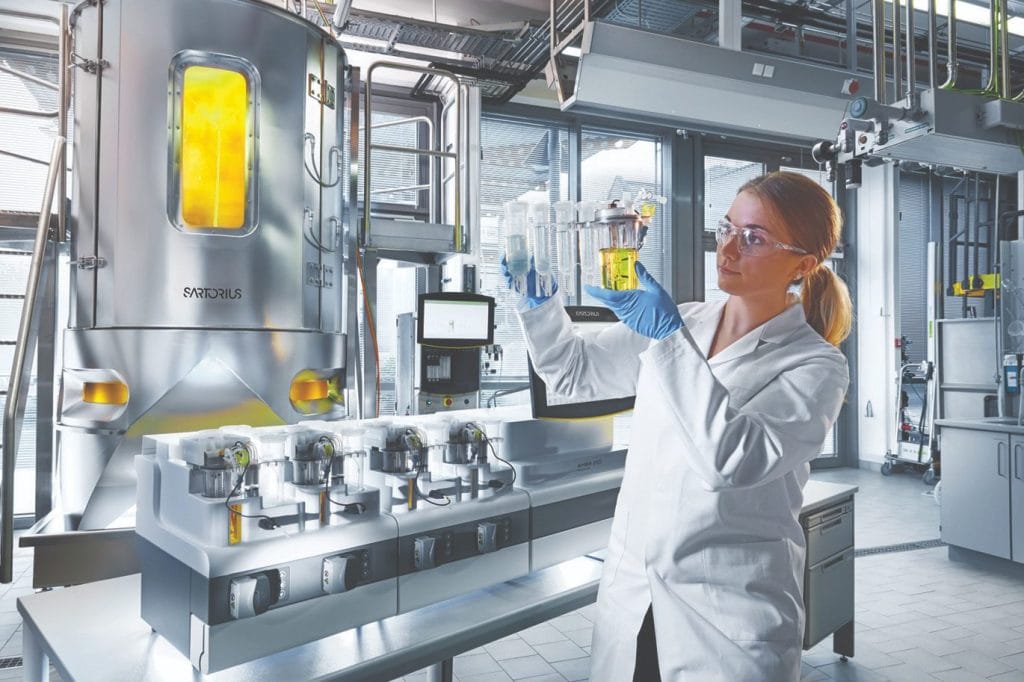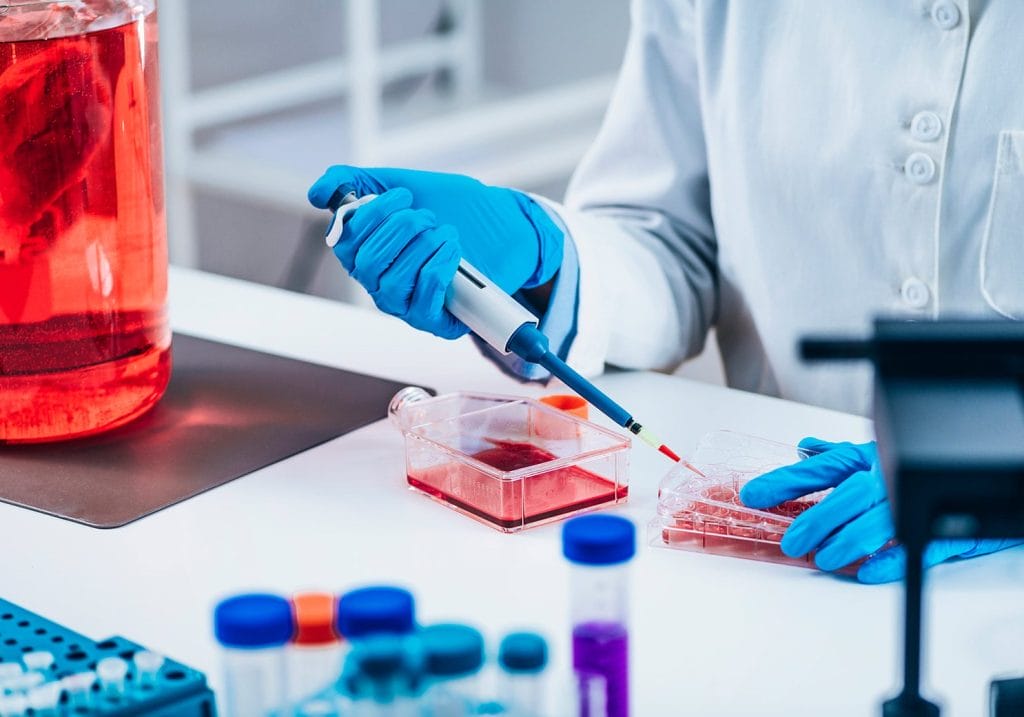As the cell therapy sector continues to expand and grow, it faces the challenge of developing safe, effective, and cost-effective products. Unfortunately, the current prices for approved products, ranging from $0.5 to $4 million, are beyond the reach of most patients, mainly due to labor costs, which comprise around 50% of cell therapy manufacturing expenses.

Therefore, integrating fully automated cell therapy manufacturing processes could significantly reduce manual intervention and human errors, leading to robust processes, improved product quality, quicker delivery times, and cost savings.
In this article, we will explore how new bioreactor and sensor technologies enable the realization of smart cell therapy manufacturing processes and how they will alter the cell therapy sector for good in the following years.
Bioreactors For Cell Manufacturing
Bioreactors are vessels that carefully regulate parameters such as pH, dissolved oxygen, and temperature to optimize cell growth at large scales necessary for cell therapies requiring doses of 108-1010 cells. The first bioreactor for compressed yeast production was created by de Becze and Liebmann in 1944. Since then, various bioreactors with special features have been developed to meet the needs of the food and biopharmaceutical industries.
Stirred tank bioreactors are the most commonly used bioreactor for large-scale cell culture. Still, they can affect biological processes with turbulent flows and large shear forces that can induce spontaneous differentiation of stem cells. Therefore, researchers developed the rocking bed bioreactor to minimize the adverse effects of shear forces, which uses wave-like motions to ensure low shear stress and efficient nutrient diffusion.

Another bioreactor suitable for culturing sensitive primary cell lines, but in smaller volumes, is the rotating wall vessel bioreactor, which rotates to produce a free-falling state for the cells. However, this bioreactor requires a complex control system to create the precise rotation speeds needed to induce a free-falling state for the cell populations to continually grow, and scalability is challenging.
Last but not least, microcarriers are required to create adherent stem cells, and packed bed microbioreactor systems have been designed to solve the technical challenges and regulatory difficulties associated with removing dissolvable microcarriers. In the packed bed bioreactor, cells are seeded on a fixed bed, and placed on immobilized surfaces such as microcarriers, scaffolds, or porous fibers. Fresh culture media continuously circulates within the system to supply oxygen and nutrients, achieving high-density cell culture and cost efficiency.
Integrating Robotics With Bioreactors For Cell Manufacturing
Bioreactors are a commonly used tool for cell manufacturing due to their scalability and low shear stress. However, they currently lack automation that could significantly reduce labor expenses, lower contamination risks, and ensure compliance with good manufacturing practices. Additionally, they have not yet integrated with robotics technologies that could further enhance their efficiency.
By incorporating modular bioreactors with robotics technologies, the potential for revolutionary advancements in cell manufacturing increases substantially. Automation would allow for the precise control of critical bioprocess parameters, resulting in improved product consistency and decreased batch-to-batch variability. This integration would also allow for a more streamlined manufacturing process, reducing production time and costs.
Furthermore, the use of robotics in bioreactors could lead to increased safety for operators, as well as a reduction in human errors during the manufacturing process. By minimizing the need for human intervention, the risks of contamination and production delays could be significantly reduced in cell manufacturing. Therefore, integrating robotics with modular bioreactors can transform the field of cell manufacturing, resulting in improved efficiency, consistency, and safety.
Utilizing Sensors In Bioreactors To Improve Quality
Bioreactors are equipped with sensors that monitor crucial parameters such as pH, temperature, and dissolved oxygen to ensure optimal quality control. Among the most widely used sensors are probe-based electrochemical sensors, which are cost-effective and function by detecting changes in electrical potential caused by chemical reactions. Probe-based sensors provide rapid readings and can take various measurements. However, they tend to be bulky, invasive, fragile, and prone to electronic interference.

Optical chemosensor systems have been developed as an alternative to probe-based sensors. These systems detect changes in optical properties, such as photoluminescence intensity and absorption, in response to variations in analyte concentration. They comprise a light source, indicator dye, optical fiber, and a light detector. In addition, disposable sensor patches can be placed outside a bioreactor, making them less invasive and reducing contamination risks.
Other sensors for quality control in bioreactors include spectroscopic sensors. These sensors use interactions involving molecular bonds and electromagnetic waves to measure variables like biomass and cell debris abundance. Spectroscopic sensors are noninvasive and can simultaneously deliver near-instantaneous signal readings for multiple variables. However, scattered light can compromise the measurements taken with these sensors, requiring them to be used in glass reactors to mitigate this issue.
In summary, while probe-based electrochemical sensors have been the most common type of bioreactor sensor, optical chemosensor systems, and spectroscopic sensors offer greater flexibility, less invasiveness, and more precise readings for various types of bioprocess parameters.
Final Words
Cell culture is a resource-intensive step in cell manufacturing that heavily relies on bioreactors for scalable cell production. Modern bioreactors have features like rocking motion technology that reduce shear stress and enhance cell viability.
However, as demand for cell-based therapeutic products grows, there is a need for automating cell culturing and sensing technologies to reduce reliance on human labor and improve efficiency. This will enable the delivery of innovative, affordable, and safe cell-based treatments to patients in a timely manner.
The Editorial Team at Healthcare Business Today is made up of skilled healthcare writers and experts, led by our managing editor, Daniel Casciato, who has over 25 years of experience in healthcare writing. Since 1998, we have produced compelling and informative content for numerous publications, establishing ourselves as a trusted resource for health and wellness information. We offer readers access to fresh health, medicine, science, and technology developments and the latest in patient news, emphasizing how these developments affect our lives.







